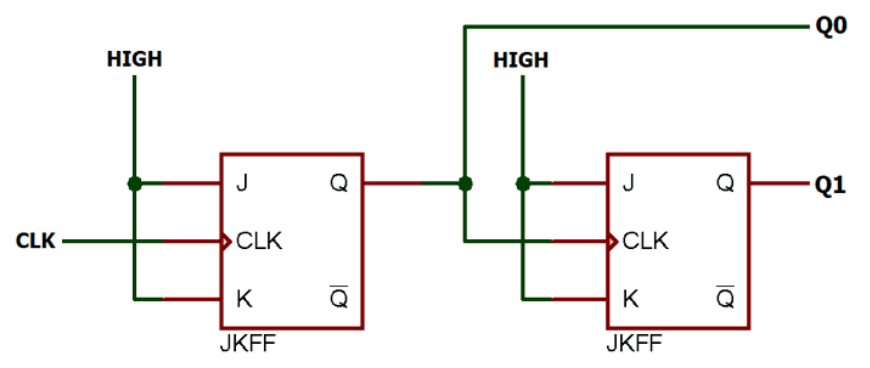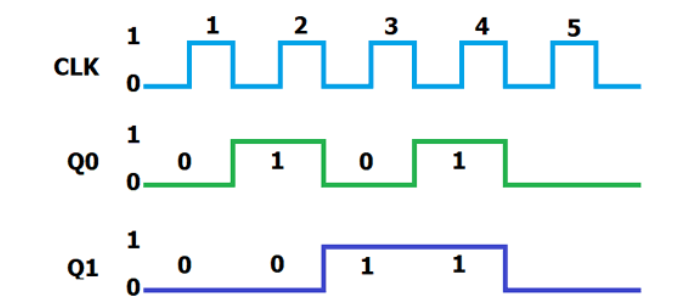Published by: Nuru
Published date: 22 Jun 2021

2-Bit Asynchronous Counter is the type of ripple counter which has only 2 flip-flops in its design. We can use them as both Up and Down Counter.

A 2-bit ripple counter is shown in the above figure. The external clock is connected to the clock input of the first flip-flop. So, this is why the first flip-flop changes the state at the quick falling edge of the clock pulse. But the second flip-flop changes only when it is triggered by the Q output of the first flip-flop. Due to an essential propagation delay in the circuit through a flip-flop, the change in the input clock pulse and change of the Q output of the first flip-flop can never occur at the same time giving the exact result. Therefore, the triggering of flip-flops cannot be simultaneous.

The transitions of Q 0, Q 1, and clock pulse in the figure of the timing diagram above are simultaneous. This phenomenon occurred here although it is an asynchronous counter. There is a small delay between the clock and the first and second transitions in the above counter.
All the clear inputs are connected together so that a single pulse can clear all the flip-flops before the counting of bits. The clock pulse given into the first flip-flop is rippled through the other counters after the propagation delay. Hence, its name is a ripple counter.
The above two-bit ripple counter has four states. There is the placement of each counter to correspond to the account value. Like the 2-bit counter, a counter having n number of flip-flops can have 2 to the power n states. These numbers of states are asserted as mod numbers. Thus, for a 2-bit counter, there is a mod 4 counter by the mechanism of 2 to the power n. Therefore, a bit counter can also be called a mod 4 counter.